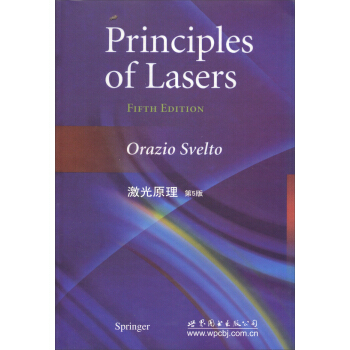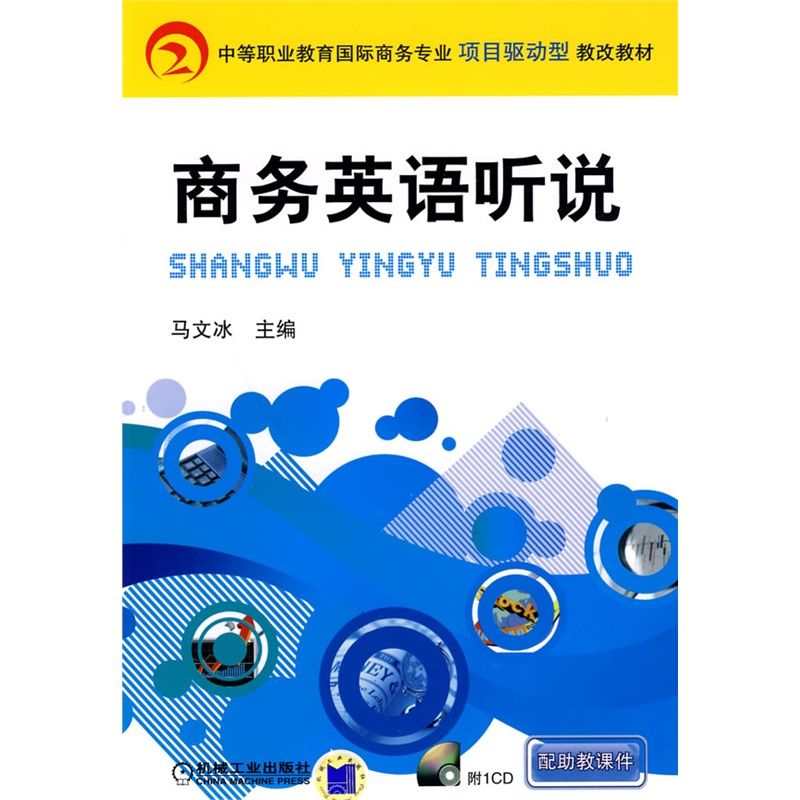激光原理(第5版)(英文版)
¥149.00定价
作者: (意)斯维尔特
出版时间:2014年7月
出版社:世界图书出版公司
- 世界图书出版公司
- 9787510077883
- 75989
- 2014年7月
- 未分类
- 未分类
- O4
内容简介
ThisbookiSmotivatedbytheveryfavorablereceptiong~ventothepreviouseditionsaswellasbvtheconsiderablerangeofnewdevelopmentsinthelaserfieldsincethepublicationoflhethirdeditionin1989.Thesenewdevelopmentsinclude,amongothers,Quantum-WellandMultiple.QuantumWelllasers.diode—pumpedsolid—statelasers,newconceptsfofbothstableandunstableresonators,femtosecondlasers,ultra·high—brightnesslasersetc.Thebasicaimofthebookhasremainedthesame,namelytoprovideabroadandunifieddescriptionoflaserbehavioratthesimplestlevelwhichiscompatiblewithacorrectphysicalunderstanding.ThebookiSthereforeintendedasatext-bookforasenior-levelorfirst—yeargraduatecourseand/orasareferencebook.
目录
List of Examples
1. Introductory Concepts
1.1. Spontaneous and Stimulated Emission, Absorption
1.2. The Laser Idea
1.3. Pumping Schemes
1.4. Properties of Laser Beams
1.4.1. Monochromaticity
i.4.2. Coherence
1.4.3. Directionality
1.4.4. Brightness
1.4.5. Short Time Duration
1.5. Types of Lasers
1.6. Organization of the Book
Problems
2. Interaction of Radiation with Atoms and Ions
2.1. Introduction
2.2. Summary of Blackbody Radiation Theory
2.2.1. Modes of a Rectangular Cavity
2.2.2. The Rayleigh-Jeans and Planck Radiation Formula
2.2.3. Planek's Hypothesis and Field Quantizatioo
2.3. Spontaneous Emission
2.3.1. Semiclassieal Approach
2.3.2. Quantum Electrodynamies Approach
2.3.3. Allowed and Forbidden Transitions
2.4. Absorption and Stimulated Emission
2.4.1. Rates of Absorption and Stimulated Emission
2.4.2. Allowed and Forbidden Transitions
2.4.3. Transition Cross Section, Absorption and Gain Coefficient
2.4.4. Einstein Thermodynamic Treatment
2.5. Line Broadening Mechanisms
2.5.1. Homogeneous Broadening
2.5.2. lnhomogeneous Broadening
2.5.3. Concluding Remarks
2.6. Nonradiative Decay and Energy Transfer
2.6.1. Mechanisms of Nonradiative Decay
2.6.2. Combined Effects of Radiative and Nonradiative Processes
2.7. Degenerate or Strongly Coupled Levels
2.7.1. Degenerate Levels
2.7.2. Strongly Coupled Levels
2.8. Saturation
2.8.1. Saturation of Absorption: Homogeneous Line
2.8.2. Gain Saturation: Homogeneous Line
2.8.3. Inhomogeneously Broadened Line
2.9. Decay of an Optically Dense Medium
2.9.1. Radiation Trapping
2.9.2. Amplified Spontaneous Emission
2.10. Concluding Remarks
Problems
References
3. Energy Levels, Radiative and Nonradiative Transitions in Molecules and Semiconductors
3.1. Molecules
3.I.I. Energy Levels
3.1.2. Level Occupation at Thermal Equilibrium
3.1.3. Stimulated Transitions
3.1.4. Radiative and Nonradiative Decay
3.2. Bulk Semiconductors
3.2.1. Electronic States
3.2.2. Density of States
3.2.3. Level Occupation at Thermal Equilibrium
3.2.4. Stimulated Transitions
3.2.5. Absorption and Gain Coefficients
3.2.6. Spontaneous Emission and Nonradiative Decay
3.2.7. Concluding Remarks
3.3. Semiconductor Quantum Wells
3.3.1. Electronic States
3.3.2. Density of States
……
1. Introductory Concepts
1.1. Spontaneous and Stimulated Emission, Absorption
1.2. The Laser Idea
1.3. Pumping Schemes
1.4. Properties of Laser Beams
1.4.1. Monochromaticity
i.4.2. Coherence
1.4.3. Directionality
1.4.4. Brightness
1.4.5. Short Time Duration
1.5. Types of Lasers
1.6. Organization of the Book
Problems
2. Interaction of Radiation with Atoms and Ions
2.1. Introduction
2.2. Summary of Blackbody Radiation Theory
2.2.1. Modes of a Rectangular Cavity
2.2.2. The Rayleigh-Jeans and Planck Radiation Formula
2.2.3. Planek's Hypothesis and Field Quantizatioo
2.3. Spontaneous Emission
2.3.1. Semiclassieal Approach
2.3.2. Quantum Electrodynamies Approach
2.3.3. Allowed and Forbidden Transitions
2.4. Absorption and Stimulated Emission
2.4.1. Rates of Absorption and Stimulated Emission
2.4.2. Allowed and Forbidden Transitions
2.4.3. Transition Cross Section, Absorption and Gain Coefficient
2.4.4. Einstein Thermodynamic Treatment
2.5. Line Broadening Mechanisms
2.5.1. Homogeneous Broadening
2.5.2. lnhomogeneous Broadening
2.5.3. Concluding Remarks
2.6. Nonradiative Decay and Energy Transfer
2.6.1. Mechanisms of Nonradiative Decay
2.6.2. Combined Effects of Radiative and Nonradiative Processes
2.7. Degenerate or Strongly Coupled Levels
2.7.1. Degenerate Levels
2.7.2. Strongly Coupled Levels
2.8. Saturation
2.8.1. Saturation of Absorption: Homogeneous Line
2.8.2. Gain Saturation: Homogeneous Line
2.8.3. Inhomogeneously Broadened Line
2.9. Decay of an Optically Dense Medium
2.9.1. Radiation Trapping
2.9.2. Amplified Spontaneous Emission
2.10. Concluding Remarks
Problems
References
3. Energy Levels, Radiative and Nonradiative Transitions in Molecules and Semiconductors
3.1. Molecules
3.I.I. Energy Levels
3.1.2. Level Occupation at Thermal Equilibrium
3.1.3. Stimulated Transitions
3.1.4. Radiative and Nonradiative Decay
3.2. Bulk Semiconductors
3.2.1. Electronic States
3.2.2. Density of States
3.2.3. Level Occupation at Thermal Equilibrium
3.2.4. Stimulated Transitions
3.2.5. Absorption and Gain Coefficients
3.2.6. Spontaneous Emission and Nonradiative Decay
3.2.7. Concluding Remarks
3.3. Semiconductor Quantum Wells
3.3.1. Electronic States
3.3.2. Density of States
……








